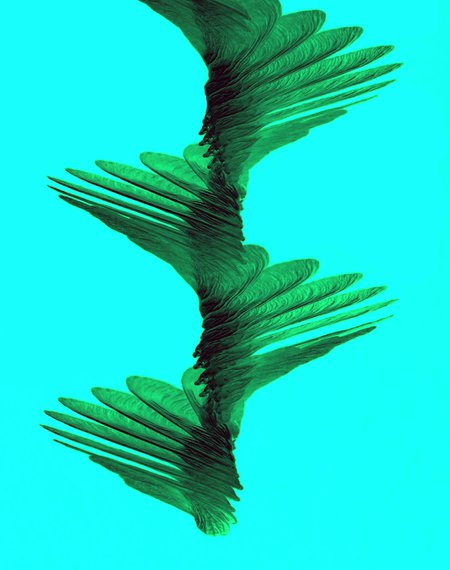“The research, led by David Lentink, an assistant professor at Wageningen, and Michael H. Dickinson, the Zarem Professor of Bioengineering at Caltech, revealed that, by swirling, maple seeds generate a tornado-like vortex that sits atop the front leading edge of the seeds as they spin slowly to the ground. This leading-edge vortex lowers the air pressure over the upper surface of the maple seed, effectively sucking the wing upward to oppose gravity, giving it a boost. The vortex doubles the lift generated by the seeds compared to nonswirling seeds.
This use of a leading-edge vortex to increase lift is remarkably similar to the trick employed by insects, bats, and hummingbirds when they sweep their wings back and forth to hover. The finding means that plants and animals have converged evolutionarily on an identical aerodynamic solution for improving their flight performance.”
___________________________________________________________
Maple Seeds and animals exploit the same trick to fly. California Institute of Technology. (2009, June 11). https://www.caltech.edu/about/news/maple-seeds-and-animals-exploit-same-trick-fly-1540
___________________________________________________________
Maple seeds remind me of the Puddle Jumper that is currently an educational aid in flight education. They have some similar properties and some that are different. But perhaps a product wouldn’t need to be manufactured to teach, what if some naturally occurring resource can be presented in a way to let it explain with little to no monetary or environmental cost? Additionally, this article discusses more recent advances in types of flight and micro vehicles which could be compelling in flight education.




